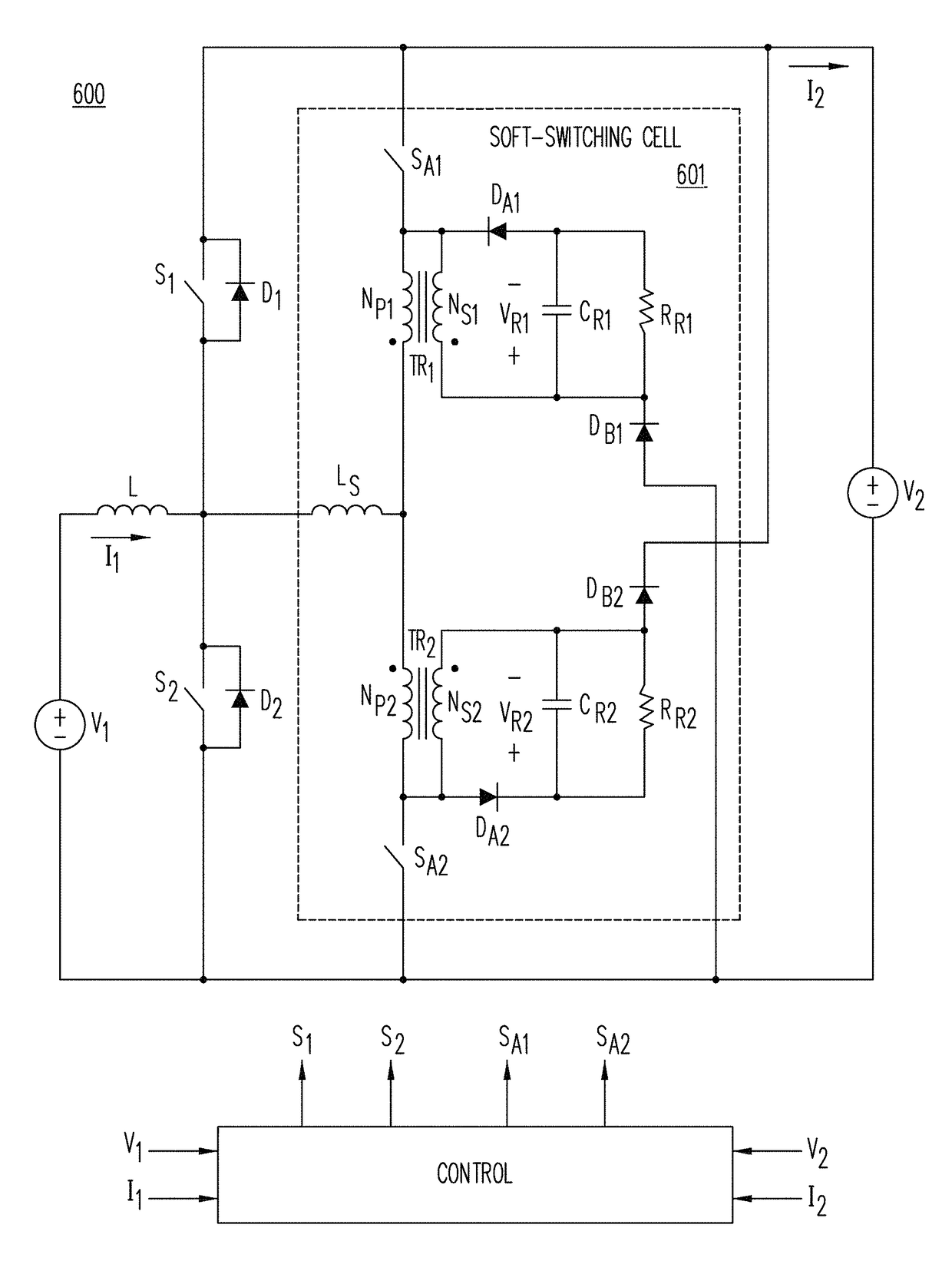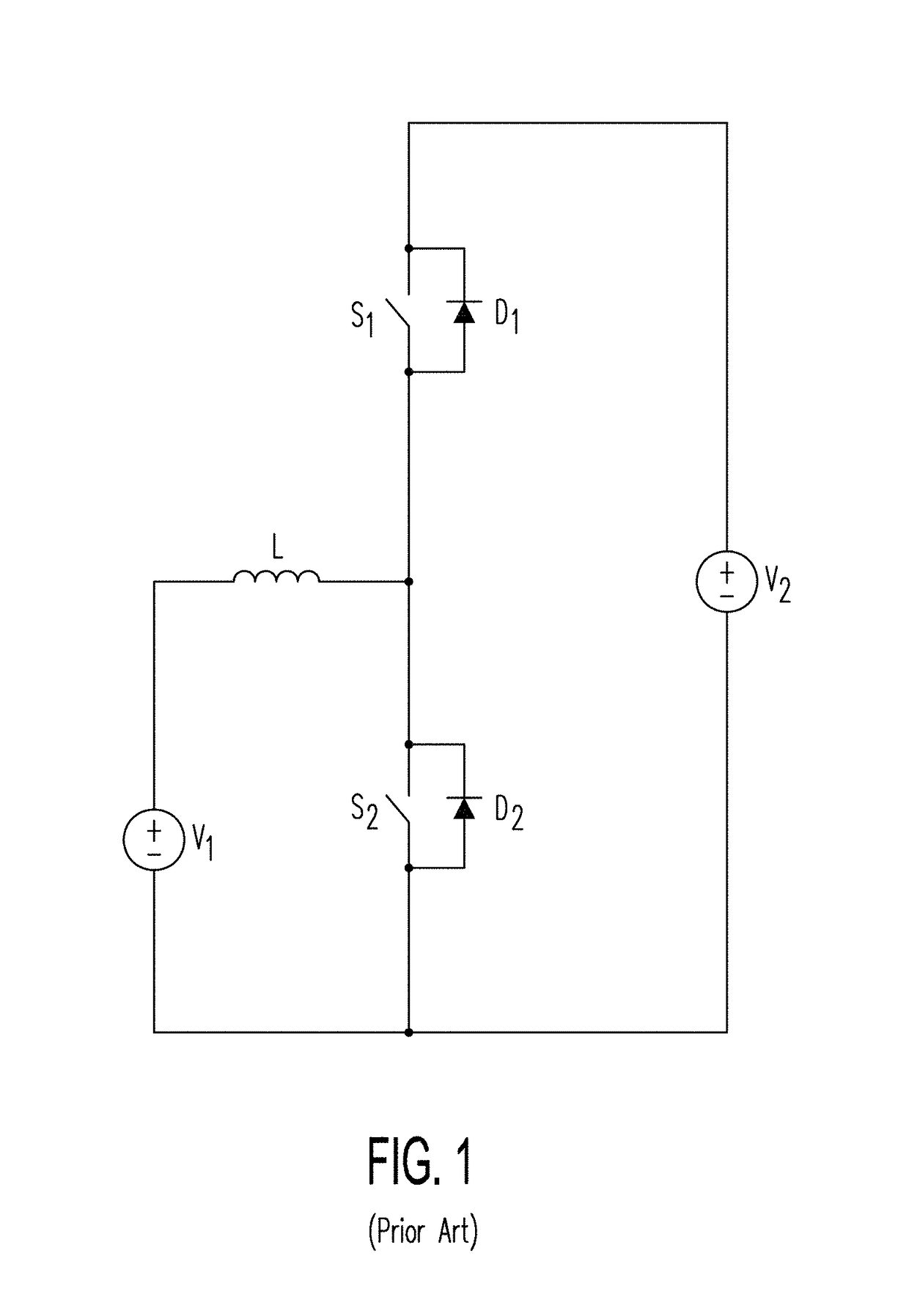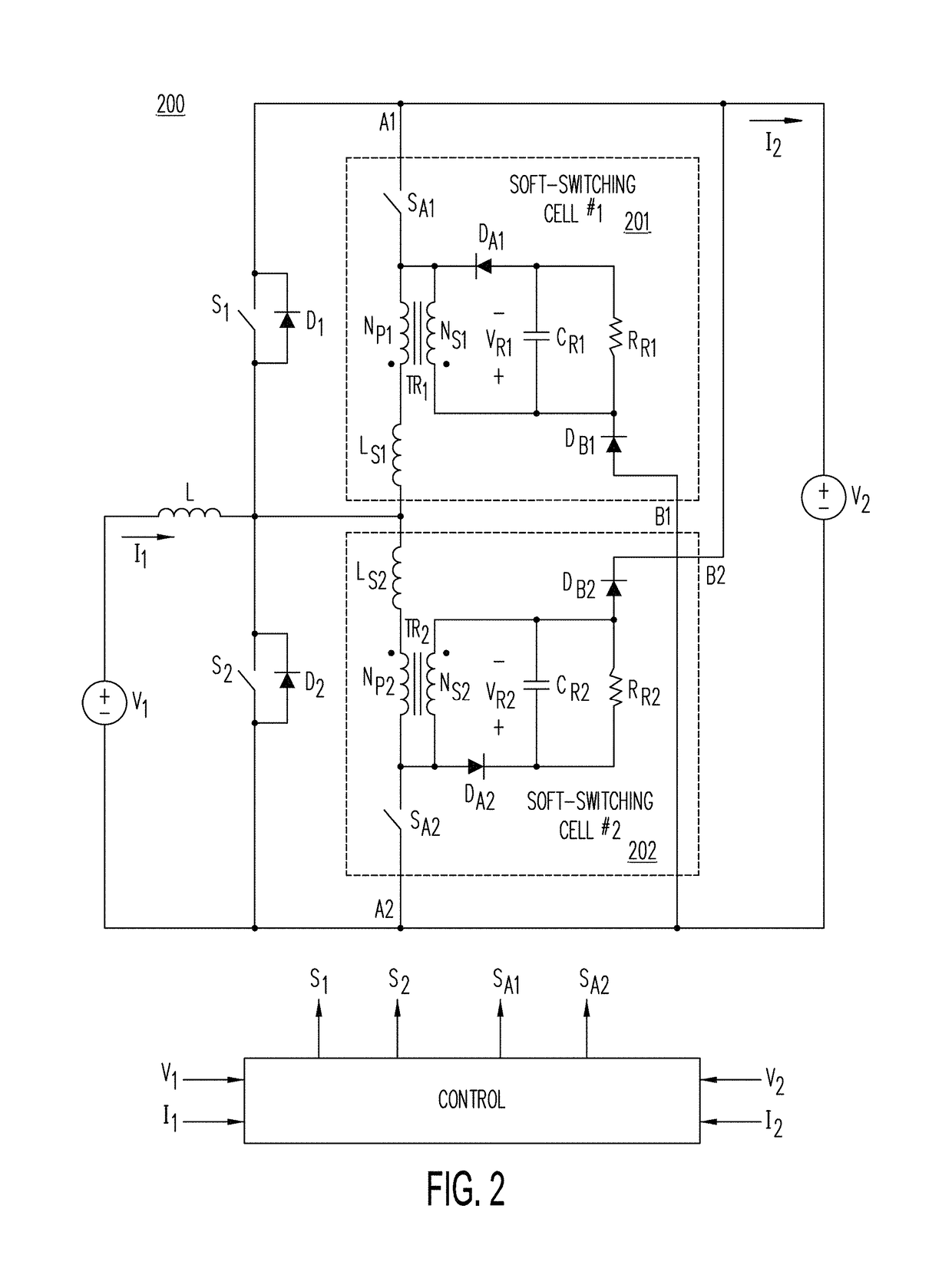Soft-switched bidirectional buck-boost converters
a converter and soft-switching technology, applied in the direction of electric variable regulation, process and machine control, instruments, etc., can solve the problems of increasing the size of the converter, ccm operations in high-voltage, high-power buck and boost converters at high frequencies, and igbt implementation is limited to a relatively low frequency, so as to reduce switching losses, minimize reverse-recovery losses, and reduce switching losses
- Summary
- Abstract
- Description
- Claims
- Application Information
AI Technical Summary
Benefits of technology
Problems solved by technology
Method used
Image
Examples
Embodiment Construction
[0032]FIG. 2 shows soft-switched, bidirectional buck-boost converter 200, in accordance with an exemplary embodiment of the present invention. As shown in FIG. 2, buck-boost converter 200 includes soft-switching cells 201 and 202, each including: (a) active switch SA, (b) inductor LS, (c) isolation transformer TR, and (d) a reset-voltage circuit formed by diode DA, capacitor CR, resistor RR and diode DB. To distinguish the elements in soft-switching cells 201 and 202, the circuit elements of soft-switching cell 201 and the circuit elements of soft-switching cell 202 are further subscripted by the reference numeral ‘1’ and ‘2,’ respectively. In FIG. 2, switches SA1 and SA2 are unidirectional current switches that can carry current only in one direction. When a bidirectional current switch (e.g., a MOSFET) is used, a rectifier in series with the switch is provided to prevent conduction of the switch's antiparallel diode. Voltage sources V1 and V2 may be implemented by any kind of DC p...
PUM
 Login to View More
Login to View More Abstract
Description
Claims
Application Information
 Login to View More
Login to View More - R&D
- Intellectual Property
- Life Sciences
- Materials
- Tech Scout
- Unparalleled Data Quality
- Higher Quality Content
- 60% Fewer Hallucinations
Browse by: Latest US Patents, China's latest patents, Technical Efficacy Thesaurus, Application Domain, Technology Topic, Popular Technical Reports.
© 2025 PatSnap. All rights reserved.Legal|Privacy policy|Modern Slavery Act Transparency Statement|Sitemap|About US| Contact US: help@patsnap.com



